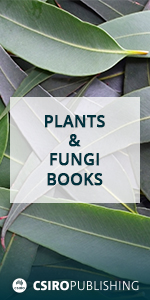
Functional Plant Biology
Volume 45 Number 11 2018
FP18022Evolutionary ecophysiology of seed desiccation sensitivity
Unlike most other seeds, recalcitrant seeds cannot be stored dry and this threatens the conservation of biodiversity of such species. A critical overview is given of the current progress in research aiming at identifying the cause of this desiccation sensitivity. Evolution, ecology, physiology and molecular mechanisms of the recalcitrance phenomenon are discussed in their mutual dependence.
FP18046Hordeum vulgare and Hordeum maritimum respond to extended salinity stress displaying different temporal accumulation pattern of metabolites
Hordeum maritimum and Hordeum vulgare significantly contribute to fodder production in Tunisia, and represent appropriate models to study salinity tolerance in cereals. The wild and cultivated genotypes show contrasting salt-tolerant behaviour and different and specific fluctuations of metabolites during long-term exposure to salinity. In particular, H. maritimum adopts a variable strategy of accumulation of ions and metabolites dependent on the intensity of stress and its duration.
FP17337Diel leaf growth of rapeseed at critically low temperature under winter field conditions
Winter crops such as rapeseed are exposed to thermal limiting growth conditions for long periods of their development. Monitoring the temporal dynamics and thermal limits of leaf growth under winter field conditions helps in understanding growth physiology at low temperature and to adopt breeding strategies for future climate scenarios. Rapeseed leaves show a daily growth rhythm with higher rates at night and limited growth during the day regulated by environmental as well as endogenous circadian factors.
FP17332Exogenous application of phenylacetic acid promotes root hair growth and induces the systemic resistance of tobacco against bacterial soft-rot pathogen Pectobacterium carotovorum subsp. carotovorum
Phenylacetic acid (PAA) was found to elicit induced systemic resistance (ISR) of tobacco against the bacterial soft rot pathogen, Pectobacterium carotovorum subsp. carotovorum (PCC). The exogenous application of PAA induced the expression of defense-related genes and enzymes, and promoted lateral root formation in tobacco.
FP17358A native parasitic plant affects the performance of an introduced host regardless of environmental variation across field sites
In southern Australia, a native parasitic vine, Cassytha pubescens (known as “snotty gobble”) is showing promise as a novel biocontrol for major invasive shrubs such as gorse (Ulex europaeus). We found that the native parasite strongly affected the N and photosynthetic status of gorse across three field sites. If successful, C. pubescens would be a sustainable environmentally-friendly solution to helping control major invasive shrubs and restore native biodiversity.
FP18039Optimising the linear electron transport rate measured by chlorophyll a fluorescence to empirically match the gross rate of oxygen evolution in white light: towards improved estimation of the cyclic electron flux around photosystem I in leaves
Cyclic electron flow around photosystem I (CEF) was discovered in isolated chloroplasts more than 6 decades ago, but its quantification has been elusive. We devised a method capable of estimating CEF in intact leaves attached to a plant. The method involves measurement of (1) the total electron flux through Photosystem I by a near-infrared signal, and (2) the linear electron flux through both photosystems in series by optimising conditions of excitation and detection of chlorophyll fluorescence.
FP18093Photosynthetic light responses of apple (Malus domestica) leaves in relation to leaf temperature, CO2 and leaf nitrogen on trees grown in orchard conditions
Presence of fruit on apple trees is known to affect photosynthetic demand but does proximity to fruit impact on leaf photosynthetic responses to light and temperature? In fact, dry weights, nitrogen contents and maximum rates of photosynthesis all trended upwards from basal to apical leaf positions. Results suggest mobility of nitrogen was a stronger driver of assimilation than proximity to fruit in these trees.
Mangrove forests frequently face significant heavy metal pollution as well as eutrophication. Kandelia obovata, a dominant mangrove species that occurs along the coasts of tropical Malesia and East Asia, exhibits notable tolerance to different types of stress. This study investigated the combined effects of Cd pollution and NH4+–N addition, finding that the two could act synergistically to limit the growth of this species. A three-temperature model with high-resolution thermal infrared remote sensing was effective in diagnosing plant health status under stress.





